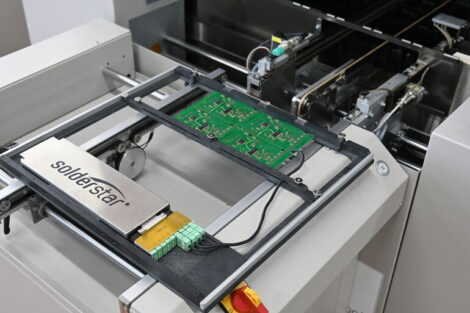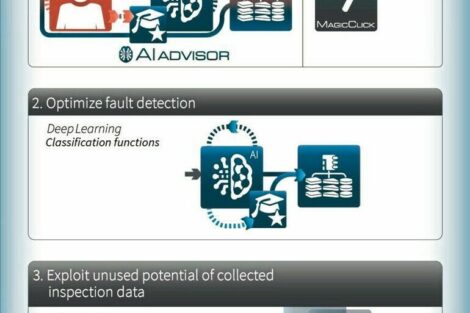More commonly referred to as RoHS 2, Directive 2011/65/EU is a reformulation and clarification of regulations originally issued in 2002. With an expanded scope, it now covers products that were formerly omitted, pertinent examples of which are industrial equipment and medical devices. Manufacturers must now furnish test reports and conformity risk assessments – or offer good reasons for not doing so. New obligations are imposed on importers and distributors to share the responsibility with manufacturers in ensuring they have a CE mark on their products and for compliance of their Electrical and Electronic Equipment with applicable hazardous substance limits of RoHS.
Directive 2011/65/EU was published in July 2011 to replace and supersede the original EU Directive 2002/95/EC “Restrictions of Certain Hazardous Substances in Electrical and Electronics Devices” abbreviated to RoHS. RoHS covers EEE products (Electrical and Electronic Equipment) and refers to the waste of such as WEEE.
The aim of RoHS is a reduction in dangerous substances incorporated in electronics products, especially toxins and heavy metals, because when such products are recycled they release harmful chemicals into the environment. A major concern is that recycling of electronics often take place in third-world countries under very basic conditions. The dangerous chemicals that are released pose real dangers to vulnerable workers in WEEE recycling and produce toxic effluents that pollute the air and rivers locally.
Many manufacturers created RoHS compliance marks of their own and the RoHS 2 Directive seeks to reduce the confusion arising from non-harmonised marks by making CE marks compulsory. That is why obtaining a CE mark is now a requirement to comply with RoHS 2. Conversely, as a prerequisite to placing a CE mark, any products under the Low Voltage Directive or any other CE directive that previously qualified for a CE mark must now also comply with RoHS. It is thus illegal under EU law to apply a CE mark to applicable products that lack RoHS compliance.
Building products that comply is not the only RoHS 2 obligation of manufacturers, they must also withdraw any non-compliant products from the market, conform to specific labelling requirements, apply type, batch or serial numbers, write technical documentation and a formal declaration of conformity. Manufacturers must also inform the competent authorities that their product is in circulation in individual Member States. RoHS 2 is subject to the European common framework as defined in Decision 768/2008/EC, unlike the original RoHS Directive from 2002, and this also holds importers and distributors responsible in ensuring that products manufactured outside the EU are compliant.
Annex 2 of the RoHS 2 Directive defines the substance limits and these are unchanged since 2002. Measured by the weight of any homogenous material used to make EEE, the cadmium (0.01%), hexavalent chromium, lead, mercury, total of polybrominated diphenyl ethers, total of polybrominated biphenyls (each 0.1%) are limited to maximum concentrations unless Annexes 3 and 4 specifically exempt them.
Within the scope of the original RoHS Directive, ten product categories were used to define consumer electrical and electronics product types, whose transition periods will expire in January 2013. The revisions made in RoHS 2 phase out certain exemptions, mostly concerning industrial equipment and medical devices, and introduce a new category to cover all products requiring electricity to perform their intended function that did not otherwise fall under the original ten categories. According to type, products that now apply under RoHS 2 that did not before have deadlines that range from July 2014 to July 2019. As an example, the compliance deadline of certain medical devices and non-industrial monitoring and control equipment will only take effect on July 22, 2014. When preparation times for compliance can extend to 18 months, players in the EEE markets should resist any temptation for complacence. Since the normal electronics shelf-life is six months or more, the window of opportunity is already closing for commencing the compliance process, according to some industry commentators.
Studies carried out in recent years on the general readiness for RoHS compliance show that for products manufactured outside EU borders there is widespread confusion in supply chains, where out of date information is often still in use. Overseas manufacturers are obviously not keeping abreast of the legislation as it develops and frequently failing to react to changes. One example shows that forms and substance lists that were revised in 2007 continue in use. In 2008, European Commission research revealed that 44% of inspected goods failed RoHS compliance and a further study in March 2011 by the Swedish Chemical Agency discovered that due to their lead content alone, 20% of imported goods would fail to comply with RoHS. This situation risks a financial disaster for those involved, because the penalties for non-compliance are high and likelihood of massive recalls and refused imports is looming.
It is necessary to be aware of the regulatory position of your entire product range, and this applies to all EEE manufacturers as well as most importers, distributors and retailers. To say that EU regulations are complicated is very much an understatement. So it is important your staff know the regulations and compliance procedures well. If this is not possible for you, then to guide you through all the intricacies of conformity and CE marking, you should use qualified consultants. To start the process in good time is of primary importance – and that really means right now for RoHS 2.
CE RoHS consultancy services will typically guide manufacturers of EEE through requirements that include assessment of compliance in their technical documentation. Manufacturers who have experience of preparing the documents required and performing assessments for EU conformity declarations according to safety or low voltage requirements, for example, may find chemical compliance assessments for RoHS a challenge. The CE RoHS services offered by third-party certification bodies, such as SGS, can provide all the testing and review of hazardous substances required by RoHS 2 (Directive 2011/65/EC) that is necessary and ensure manufacturers furnish the requisite EU declarations of conformity and adhere to the CE labelling rules, according to Articles 13, 14 and 15 of the Directive.
A notified body (NB) based in the European Union should be involved, because this speeds acceptance of imports. That is why the use of CE RoHS services ensures a smoother EU market entry for EEE, because your products are less likely to be impounded by EU border controls when an EU-based notified body has certified the CE conformity of your products. Third-party certification institutions like SGS possess vast experience with the requirements of RoHS and CE marking and experts who reduce the preparation time to prepare all the necessary documentation.
Unless managed properly, the RoHS 2 legislation introduces potential risks at each stage in the supply chain. With the object of dramatically reducing the amount of non-compliant equipment entering the EU, every link in the supply chain is obliged to assess and report non-conformities. By enforcing a visible mark for the first time, each Member State of the EU could theoretically exclude entry of products lacking the mark at their border. The result is that failure to comply with the requirements could spell financial ruin. It is therefore in your own interests to ensure this does not happen to you.
Share:













